-
 Bitcoin
Bitcoin $119000
0.17% -
 Ethereum
Ethereum $3664
-2.12% -
 XRP
XRP $3.229
-7.77% -
 Tether USDt
Tether USDt $1.001
0.02% -
 BNB
BNB $783.2
-1.48% -
 Solana
Solana $191.3
-5.26% -
 USDC
USDC $1.000
0.03% -
 Dogecoin
Dogecoin $0.2450
-7.74% -
 TRON
TRON $0.3115
-1.61% -
 Cardano
Cardano $0.8229
-6.80% -
 Hyperliquid
Hyperliquid $44.17
-2.93% -
 Stellar
Stellar $0.4343
-7.23% -
 Sui
Sui $3.792
-4.09% -
 Chainlink
Chainlink $18.38
-5.73% -
 Hedera
Hedera $0.2491
-7.79% -
 Bitcoin Cash
Bitcoin Cash $518.1
-1.51% -
 Avalanche
Avalanche $24.13
-5.84% -
 Litecoin
Litecoin $113.9
-5.41% -
 UNUS SED LEO
UNUS SED LEO $8.974
-0.21% -
 Shiba Inu
Shiba Inu $0.00001400
-7.98% -
 Toncoin
Toncoin $3.215
-2.09% -
 Ethena USDe
Ethena USDe $1.001
0.03% -
 Polkadot
Polkadot $4.178
-6.84% -
 Uniswap
Uniswap $10.38
-3.05% -
 Monero
Monero $317.8
-1.85% -
 Bitget Token
Bitget Token $4.733
-1.94% -
 Pepe
Pepe $0.00001293
-8.20% -
 Dai
Dai $1.000
0.02% -
 Aave
Aave $292.8
-4.74% -
 Bittensor
Bittensor $430.1
-3.67%
What is a Bollinger Band squeeze in crypto
The Bollinger Band squeeze signals potential volatility breakouts in crypto, helping traders anticipate sharp price moves after periods of consolidation.
Jul 13, 2025 at 03:43 am
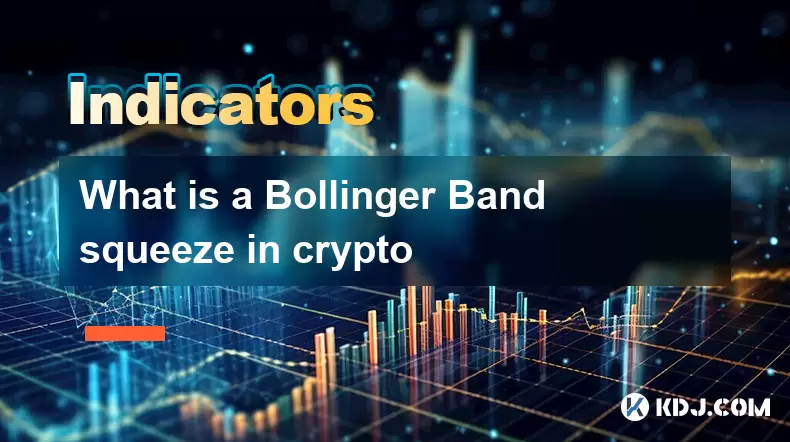
Understanding the Bollinger Band Squeeze in Cryptocurrency Trading
In cryptocurrency trading, technical indicators play a crucial role in predicting price movements and identifying potential breakout opportunities. One such powerful indicator is the Bollinger Band squeeze, which helps traders anticipate volatility expansions in digital asset markets. The concept of a Bollinger Band squeeze occurs when the bands contract tightly around the moving average, signaling that a significant price movement may be imminent.
Bollinger Bands
consist of three lines: a simple moving average (SMA) in the center, with upper and lower bands set at a certain number of standard deviations away from the SMA. Typically, the default setting for Bollinger Bands is 20 periods with two standard deviations. When the distance between the upper and lower bands narrows significantly, it reflects a period of low volatility, known as a squeeze.How to Identify a Bollinger Band Squeeze in Crypto Charts
Recognizing a Bollinger Band squeeze on a crypto chart involves observing the narrowing of the bands relative to their historical width. Traders often use additional tools like the BandWidth indicator, which measures the distance between the upper and lower bands as a percentage of the middle band. A decreasing bandwidth indicates tightening bands and thus a potential squeeze.
- Select a crypto charting platform that supports Bollinger Bands and optional indicators like BandWidth.
- Apply the Bollinger Bands (default settings: 20-period SMA and 2 standard deviations).
- Add the BandWidth indicator beneath the chart or as an overlay.
- Monitor the BandWidth line for declining values over several candlesticks, indicating narrowing bands.
- Identify moments where the bands appear visually compressed around the price action.
When both visual analysis and BandWidth confirm contraction, it suggests that the market is entering a phase of consolidation and could soon experience a sharp move in either direction.
Why the Bollinger Band Squeeze Matters in Crypto Markets
The Bollinger Band squeeze is particularly relevant in the volatile world of cryptocurrencies because digital assets are prone to sudden and explosive price movements. Unlike traditional markets, crypto markets operate 24/7 and are highly sensitive to news, regulatory changes, and macroeconomic factors. Therefore, identifying a low-volatility environment can help traders prepare for high-impact moves.
A squeeze doesn't indicate the direction of the upcoming breakout—it only signals that increased volatility is likely. In crypto, this can mean rapid price surges or steep corrections within minutes. Traders who recognize a squeeze setup can position themselves ahead of time by placing stop orders above and below the current price range.
How to Trade a Bollinger Band Squeeze in Crypto
Trading a Bollinger Band squeeze requires careful planning and risk management due to the uncertainty of the breakout direction. Here’s a step-by-step guide to executing a squeeze trade:
- Confirm the presence of a squeeze using Bollinger Bands and BandWidth indicator.
- Wait for the price to break out of the narrow band range—either above the upper band or below the lower band.
- Place a buy stop order slightly above the upper band and a sell stop order slightly below the lower band.
- Set a tight stop-loss initially just beyond the opposite side of the breakout to manage risk.
- Allow the winning trade to run while trailing the stop-loss to lock in profits as the trend develops.
It's important to note that false breakouts can occur, especially during low-volume periods. Hence, confirming the breakout with volume or other momentum indicators like RSI or MACD enhances the probability of success.
Common Misinterpretations of the Bollinger Band Squeeze in Crypto
Despite its popularity, the Bollinger Band squeeze is often misinterpreted in crypto trading circles. One common mistake is assuming that a squeeze always leads to a strong breakout. In reality, some squeezes result in weak or short-lived moves, particularly in sideways or choppy markets.
Another misunderstanding is relying solely on the squeeze without incorporating other forms of analysis. For instance, ignoring key support/resistance levels or failing to consider broader market sentiment can lead to poor entry points. Successful crypto traders combine the Bollinger Band squeeze with price action patterns, candlestick formations, and volume spikes to filter out noise and improve accuracy.
Frequently Asked Questions About Bollinger Band Squeeze in Crypto
What timeframes work best for identifying a Bollinger Band squeeze in crypto?
While the Bollinger Band squeeze can be applied across multiple timeframes, many crypto traders prefer using the 1-hour or 4-hour charts for more reliable signals. Shorter timeframes like 5-minute or 15-minute charts tend to generate frequent but less meaningful squeezes due to higher market noise.
Can the Bollinger Band squeeze be used for all cryptocurrencies?
Yes, the Bollinger Band squeeze applies to any tradable asset, including Bitcoin, Ethereum, altcoins, and stablecoins. However, liquidity and trading volume affect the reliability of the signal. Larger-cap cryptocurrencies generally produce more trustworthy squeeze setups compared to low-volume tokens.
Is the Bollinger Band squeeze a standalone strategy in crypto trading?
No, the Bollinger Band squeeze should not be used in isolation. It serves as a volatility indicator rather than a directional one. Combining it with volume analysis, support/resistance levels, and trendlines improves its effectiveness and reduces the risk of false signals.
How long does a Bollinger Band squeeze typically last in crypto markets?
There’s no fixed duration for a Bollinger Band squeeze, but in crypto, it often lasts between 6 to 20 candlesticks depending on the timeframe. On a 1-hour chart, this translates to roughly 6 to 20 hours of consolidation before a breakout potentially occurs.
Disclaimer:info@kdj.com
The information provided is not trading advice. kdj.com does not assume any responsibility for any investments made based on the information provided in this article. Cryptocurrencies are highly volatile and it is highly recommended that you invest with caution after thorough research!
If you believe that the content used on this website infringes your copyright, please contact us immediately (info@kdj.com) and we will delete it promptly.
- XRP, Solana, and Institutional Adoption: A New Era for Crypto?
- 2025-07-24 11:10:12
- Dogecoin, Remittix, and Crypto Protocols: The Evolution of Digital Finance
- 2025-07-24 10:50:12
- BlockDAG, Hedera, and Stellar: Charting the Course for Crypto's Future
- 2025-07-24 10:50:12
- BlockDAG's No-Vesting Edge: Can It Outpace Cardano's Price?
- 2025-07-24 11:10:12
- South Korea's Credit Card Industry Embraces Stablecoin Regulations: A New Era?
- 2025-07-24 10:30:12
- Bitcoin, SHIB, and Institutional Momentum: Decoding Crypto's 2025 Trajectory
- 2025-07-24 11:15:12
Related knowledge
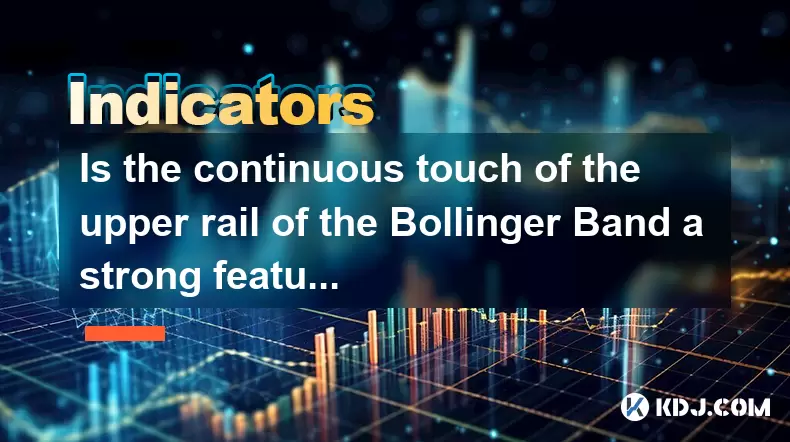
Is the continuous touch of the upper rail of the Bollinger Band a strong feature or an overbought risk?
Jul 24,2025 at 12:22pm
Understanding the Bollinger Band StructureThe Bollinger Band is a widely used technical analysis tool in the cryptocurrency market, designed to measur...
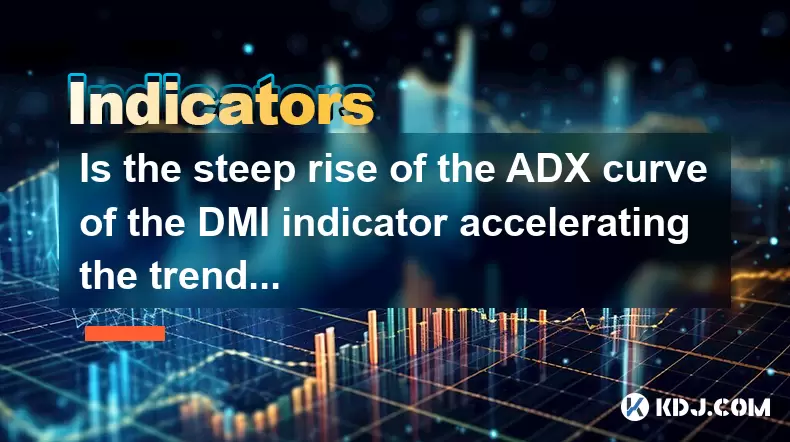
Is the steep rise of the ADX curve of the DMI indicator accelerating the trend or about to reverse?
Jul 24,2025 at 11:15am
Understanding the DMI Indicator and Its ComponentsThe Directional Movement Index (DMI) is a technical analysis tool used to identify the presence and ...
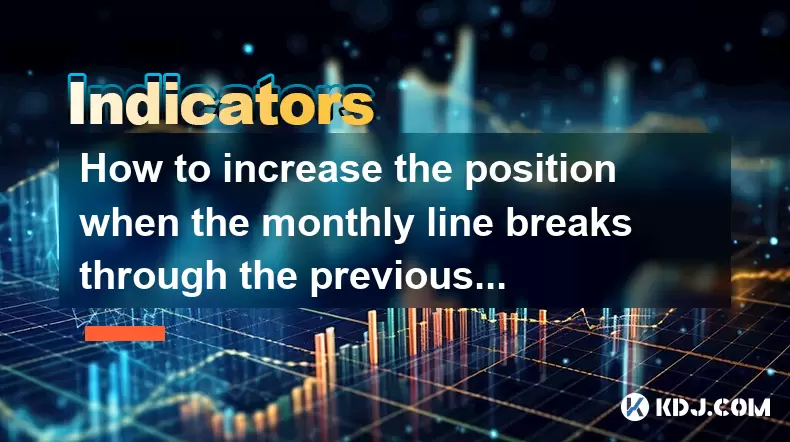
How to increase the position when the monthly line breaks through the previous high + the weekly KD golden cross + the daily line gaps?
Jul 24,2025 at 09:42am
Understanding the Monthly Line Breakout Beyond Previous HighWhen the monthly line breaks through the previous high, it signals a powerful shift in lon...
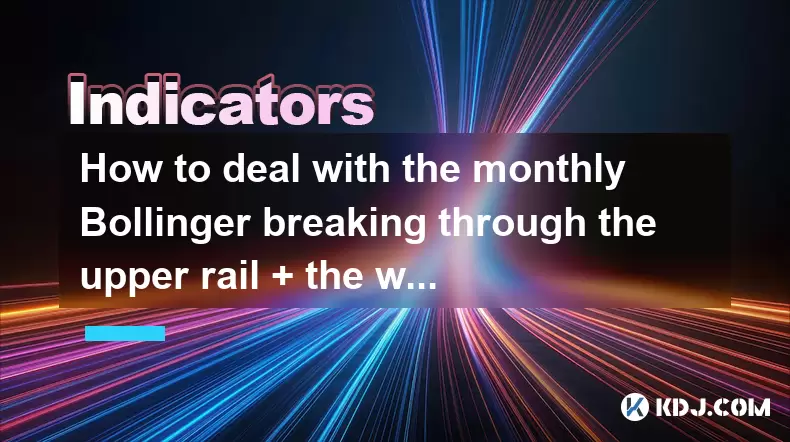
How to deal with the monthly Bollinger breaking through the upper rail + the weekly RSI overbought + the daily line's long negative correction?
Jul 24,2025 at 08:42am
Understanding the Bollinger Bands Breakout on the Monthly ChartWhen the monthly Bollinger Bands experience a breakout above the upper rail, it signals...
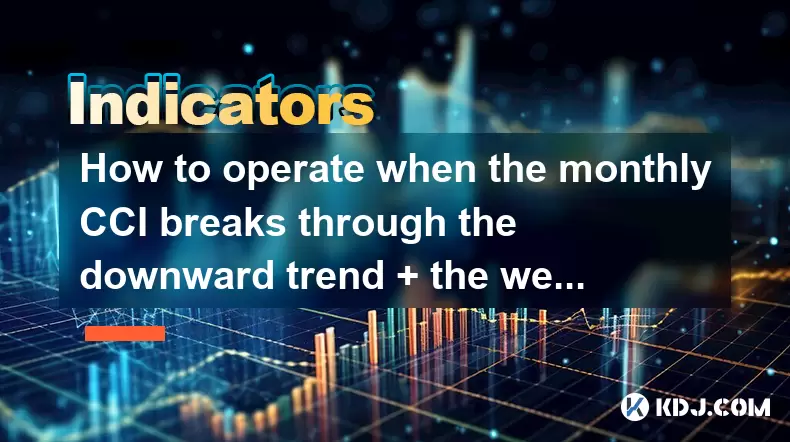
How to operate when the monthly CCI breaks through the downward trend + the weekly line's three consecutive positives + the daily line's shrinking volume and stepping back?
Jul 24,2025 at 09:00am
Understanding the CCI Indicator and Its Role in Trend AnalysisThe Commodity Channel Index (CCI) is a momentum-based oscillator used to identify overbo...
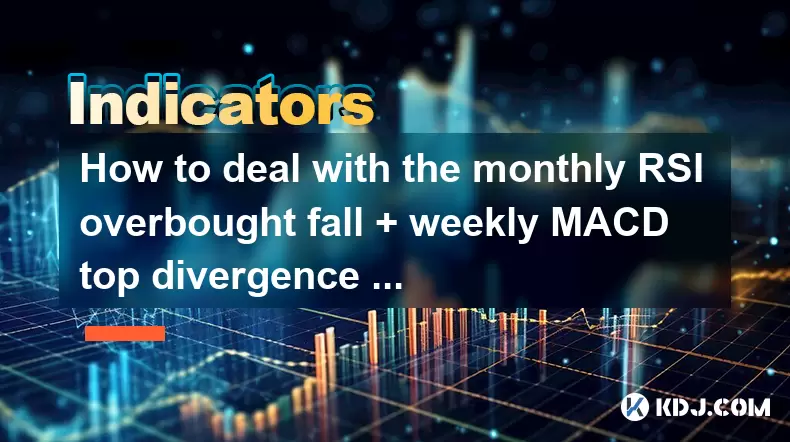
How to deal with the monthly RSI overbought fall + weekly MACD top divergence + daily line falling below the 30-day line?
Jul 24,2025 at 12:01pm
Understanding the Monthly RSI Overbought SignalWhen the monthly RSI enters overbought territory, it indicates that the cryptocurrency has experienced ...

Is the continuous touch of the upper rail of the Bollinger Band a strong feature or an overbought risk?
Jul 24,2025 at 12:22pm
Understanding the Bollinger Band StructureThe Bollinger Band is a widely used technical analysis tool in the cryptocurrency market, designed to measur...

Is the steep rise of the ADX curve of the DMI indicator accelerating the trend or about to reverse?
Jul 24,2025 at 11:15am
Understanding the DMI Indicator and Its ComponentsThe Directional Movement Index (DMI) is a technical analysis tool used to identify the presence and ...

How to increase the position when the monthly line breaks through the previous high + the weekly KD golden cross + the daily line gaps?
Jul 24,2025 at 09:42am
Understanding the Monthly Line Breakout Beyond Previous HighWhen the monthly line breaks through the previous high, it signals a powerful shift in lon...

How to deal with the monthly Bollinger breaking through the upper rail + the weekly RSI overbought + the daily line's long negative correction?
Jul 24,2025 at 08:42am
Understanding the Bollinger Bands Breakout on the Monthly ChartWhen the monthly Bollinger Bands experience a breakout above the upper rail, it signals...

How to operate when the monthly CCI breaks through the downward trend + the weekly line's three consecutive positives + the daily line's shrinking volume and stepping back?
Jul 24,2025 at 09:00am
Understanding the CCI Indicator and Its Role in Trend AnalysisThe Commodity Channel Index (CCI) is a momentum-based oscillator used to identify overbo...

How to deal with the monthly RSI overbought fall + weekly MACD top divergence + daily line falling below the 30-day line?
Jul 24,2025 at 12:01pm
Understanding the Monthly RSI Overbought SignalWhen the monthly RSI enters overbought territory, it indicates that the cryptocurrency has experienced ...
See all articles

























































































